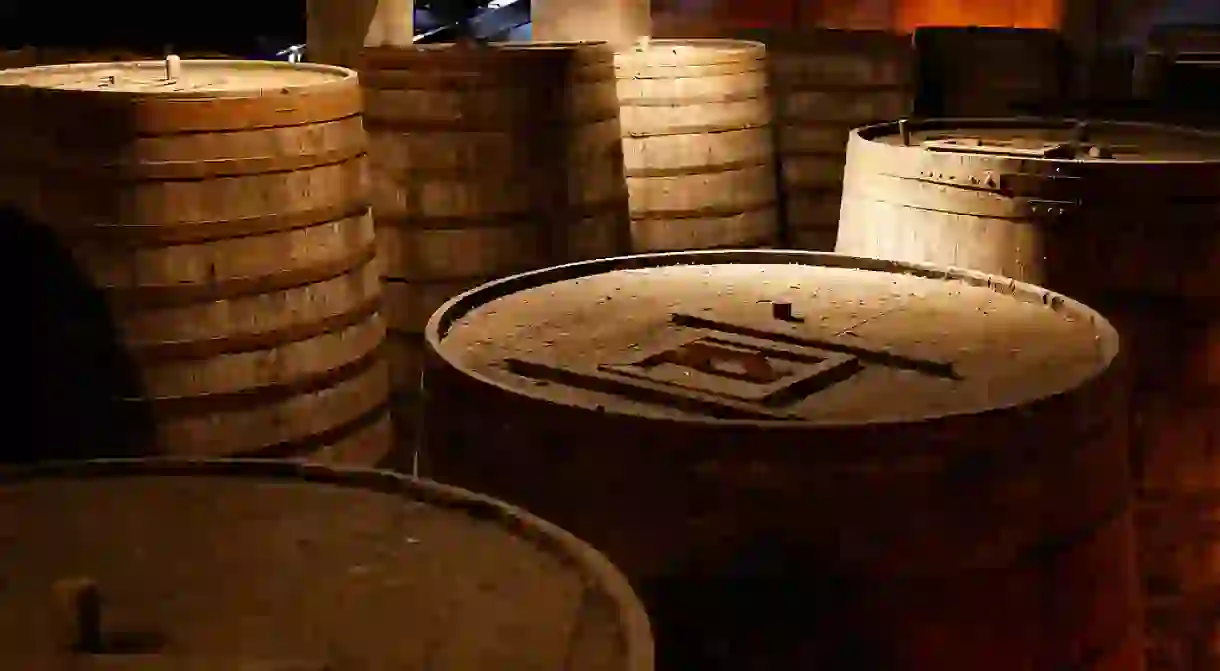Everything You Need To Know About Cachaça, Brazil's Favorite Spirit

Cachaça is to Brazil what vodka is to Russia. Representing the country in the distilled spirits category, cachaça is solely produced in Brazil and is made from sugarcane. It’s famous for being the main ingredient in caipirinhas, the national cocktail, made from cachaça, lime, sugar and ice.
Cachaça is distilled throughout Brazil from huge industrial outfits right down to simple home distilleries. Between these different production centers, 800 million liters of cachaça is produced per year, 30% of which comes from small-batch breweries. Despite the difference in production size, one thing that all producers aim for is producing a cachaça that is between 38% and 48% pure alcohol, one of the defining characteristics of the drink.

Typically associated with caipirinhas, cachaça has undergone a cocktail revolution that has seen it appearing in other drinks in increasingly innovative ways. The sales figures are a testimony to the more creative use of cachaça; in 2005, there were 6,000 9-liter cases of cachaça sold in the U.S.A. Jump ten years ahead to 2015 though and a whopping 100,000 9-liter cases were sold.
A fascinating fact about cachaça is the similarities and differences it shares with rum and rhum agricole. Firstly, they are all distilled from sugarcane yet the differences lie in the subtle ways they are processed. Cachaça can only be made in Brazil and it can only be made from fresh sugarcane juice which is fermented and single distilled. On the other hand, rum can be made anywhere and is usually made from molasses which is a by product of sugarcane production and is distilled to a much higher percentage of pure alcohol. Finally, rhum agricole is in fact largely similar to cachaça. The difference is it is only produced in Martinique under strict EU laws and regulations that permit just 23 designated regions of the French island to grow the required sugarcane.

The alcohol industry uses wooden barrels to enhance a spirit’s flavor and smell, and cachaça isn’t any different. One of the most unique qualities of cachaça is that it is one of the only spirits in the world that can be aged in indigenous Brazilian wood which exposes it to many different flavors and aromas. Research from the University of Sao Paulo identified 70 different aromas, an exciting discovery for mixology.
Cachaça is classified based on its age and fermentation process, which is important to know for taste and quality. The white cachaça, also known as classic, traditional or silver, is either stored in stainless steel or rested in wood that doesn’t impart any color, such as peanut wood. On the other hand, there is the amarela (yellow) cachaça that is also known as gold or aged. The quality tends to be better than white cachaça with a smoother aftertaste and a higher price tag.

Finally, there is the truly aged cachaça where over 50% of the spirit must be over one year old and rested in barrels up to 700 liters. Aged cachaça can be further categorized into Premium which is one year old or Extra Premium which is no less than three years old. Both Premium and Extra Premium need 100% of the content to have been aged in appropriate barrels.
Cachaça production can be a fine art that takes careful preparation following vigorous procedures. Usually the caipirinhas on the beach in Brazil are made from the cheapest white cachaça. Go to a more upscale bar and try a caipirinha with a gold or aged cachaça though and you’ll find the taste is notably different.













